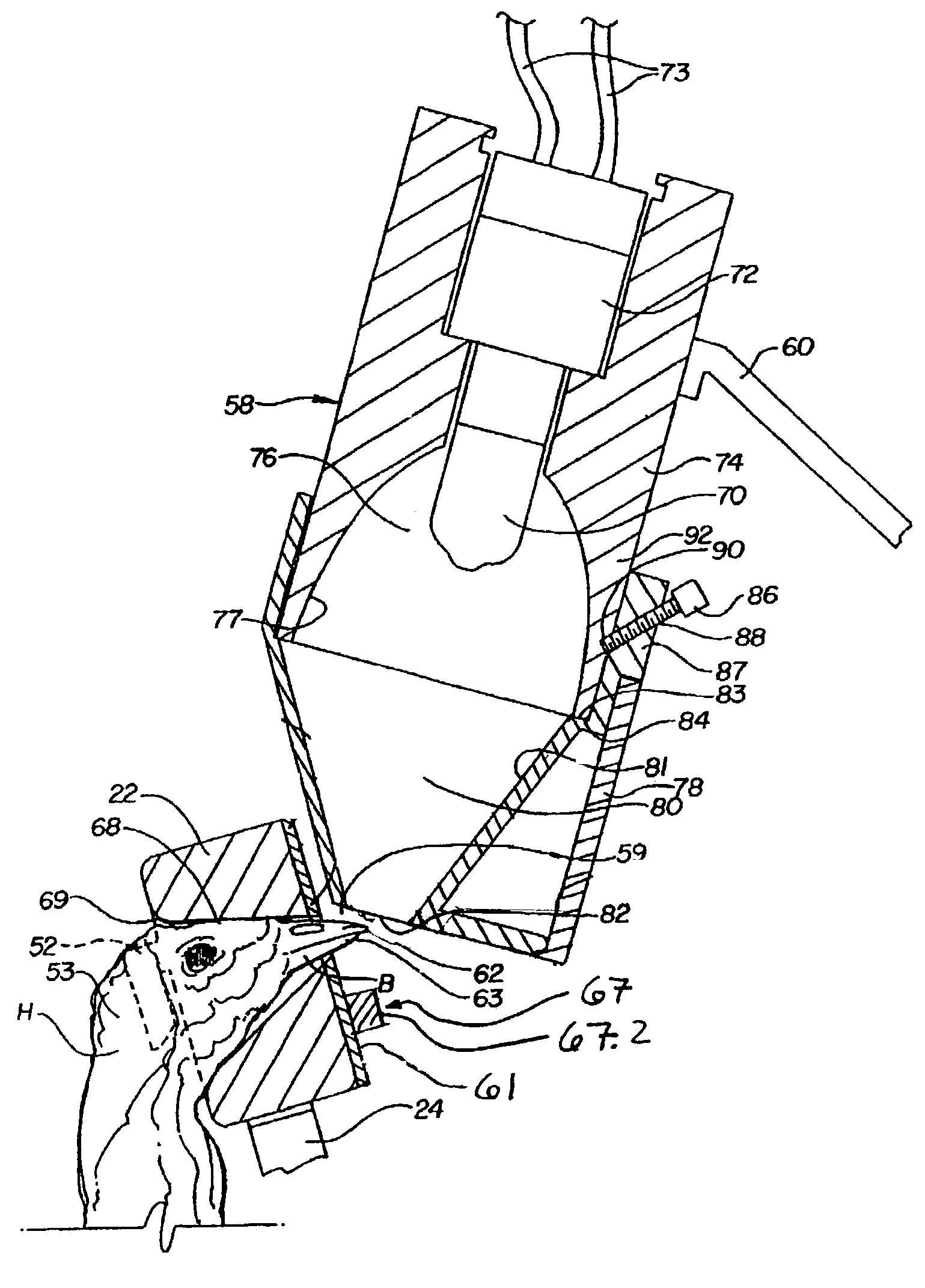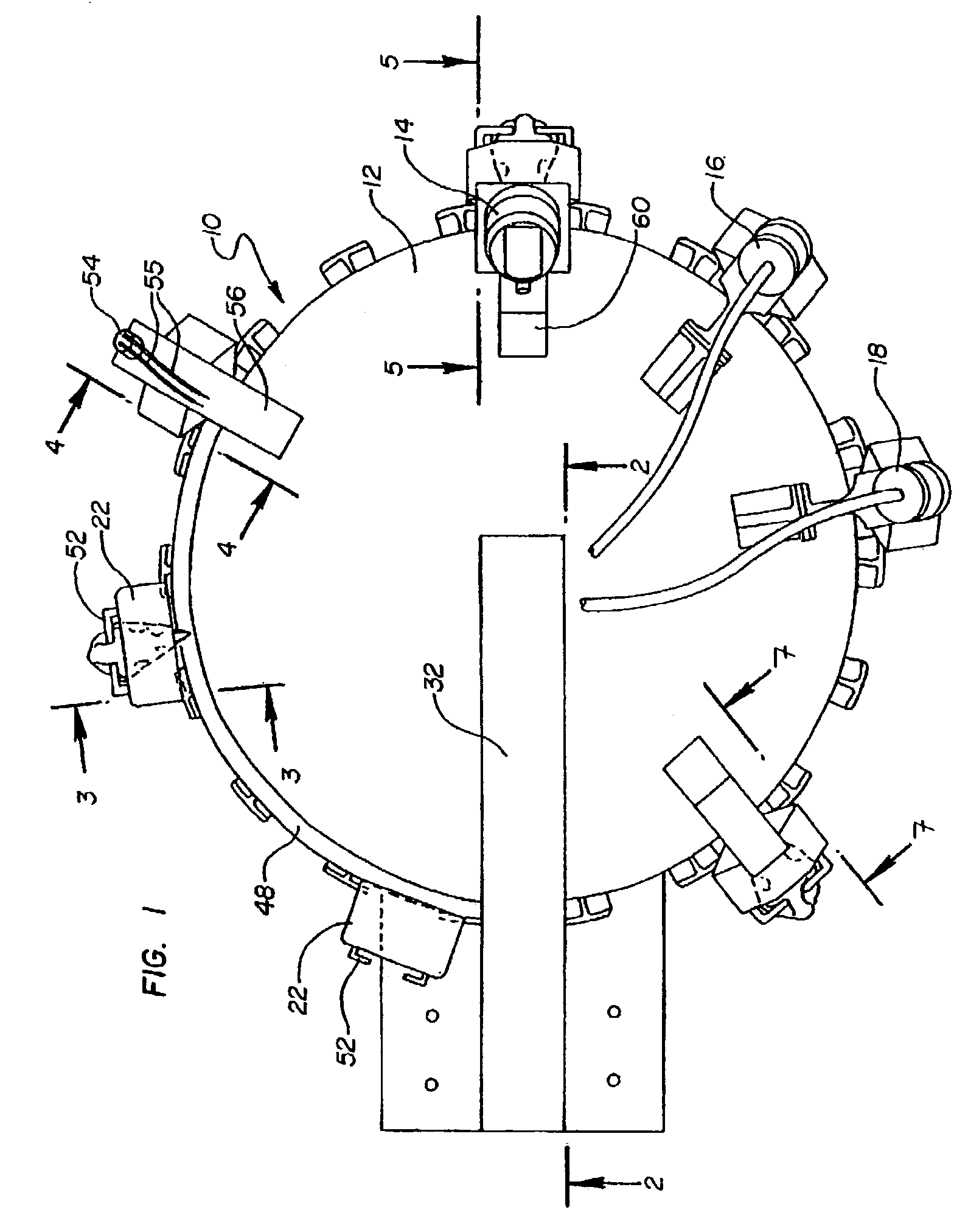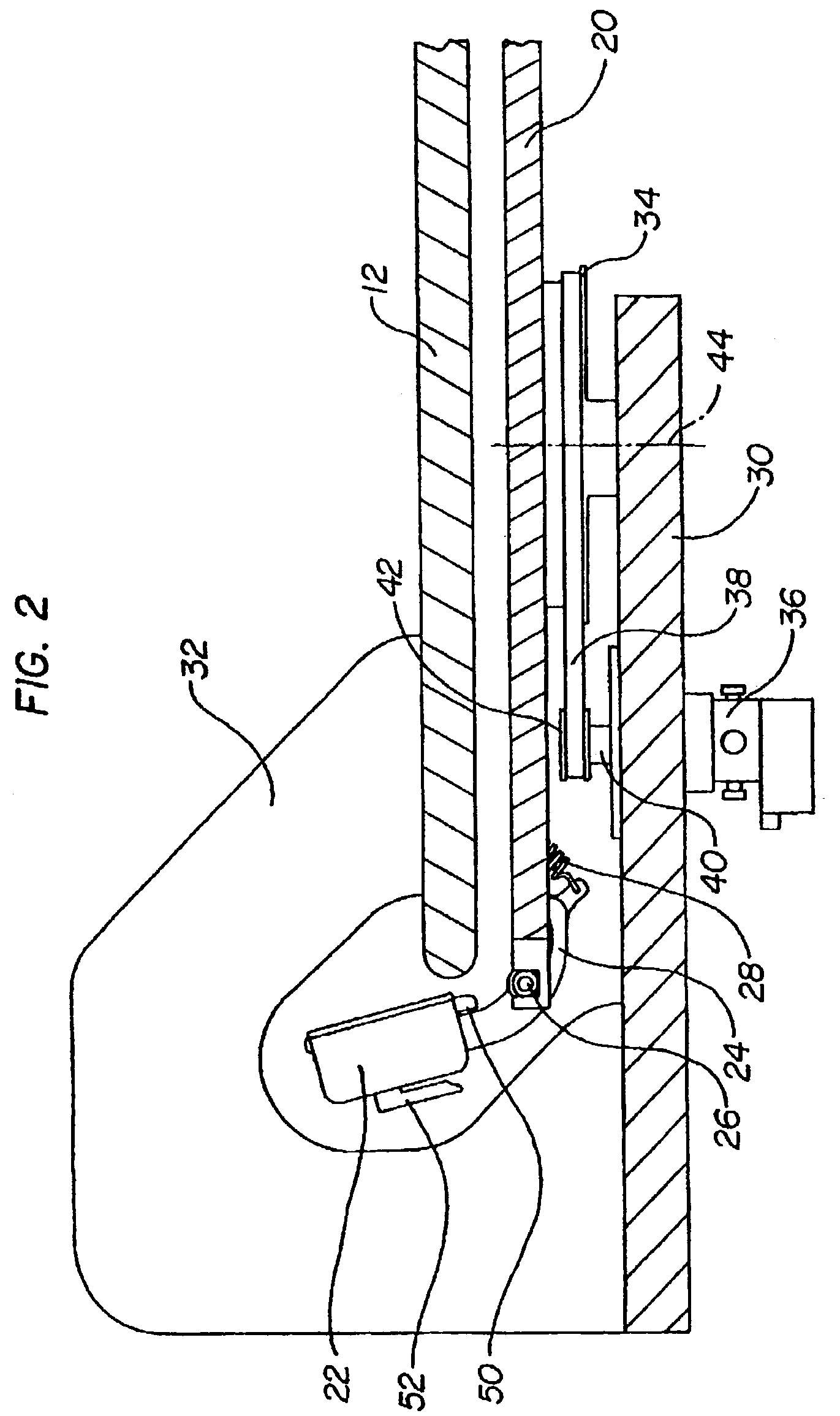Apparatus and method for upper and lower beak treatment
a technology beaks, applied in the field of upper and lower beaks, can solve the problems of economic losses for poultry producers, disfigurement, illness or death, and the most dangerous part of the beak, and achieve the effect of improving mating success and reducing food was
- Summary
- Abstract
- Description
- Claims
- Application Information
AI Technical Summary
Benefits of technology
Problems solved by technology
Method used
Image
Examples
Embodiment Construction
[0027]In the following detailed description of illustrative embodiments, reference is made to the accompanying drawings that form a part hereof, and in which are shown, by way of illustration, specific embodiments in which the invention may be practiced. It is to be understood that other embodiments may be utilized and structural changes may be made without departing from the scope of the present invention. Furthermore, like reference numbers denote like features in the different figures.
[0028]One apparatus for processing live poultry indicated in general by the numeral 10 is shown in FIG. 1. A mounting plate 12 supports beak treatment station 14, liquid injection station 16 and pellet injection station 18. Poultry P are secured in the bird head positioning device 22 and are preferably conveyed to the beak treatment station 14 before being unloaded from the head positioning device 22.
[0029]FIG. 2 is a cross-sectional view of one mounting arrangement between mounting plate 12 and pla...
PUM
 Login to View More
Login to View More Abstract
Description
Claims
Application Information
 Login to View More
Login to View More - R&D
- Intellectual Property
- Life Sciences
- Materials
- Tech Scout
- Unparalleled Data Quality
- Higher Quality Content
- 60% Fewer Hallucinations
Browse by: Latest US Patents, China's latest patents, Technical Efficacy Thesaurus, Application Domain, Technology Topic, Popular Technical Reports.
© 2025 PatSnap. All rights reserved.Legal|Privacy policy|Modern Slavery Act Transparency Statement|Sitemap|About US| Contact US: help@patsnap.com



